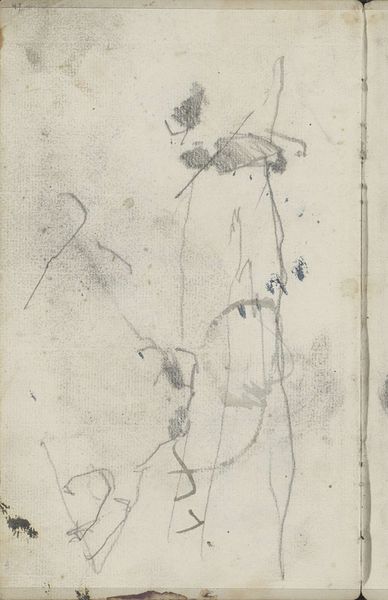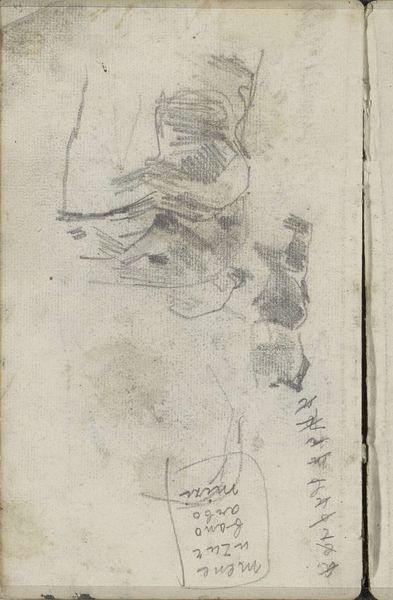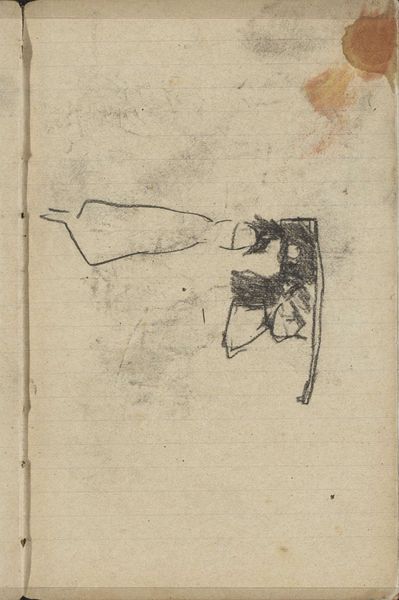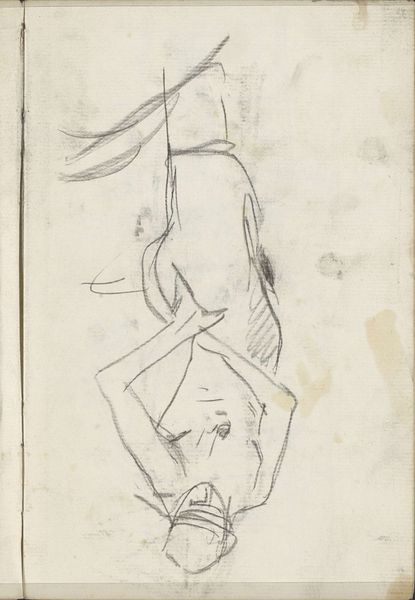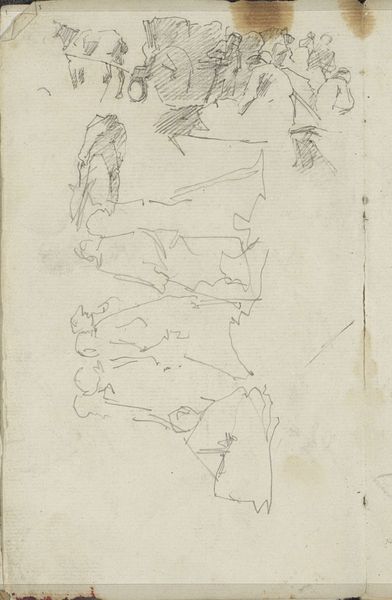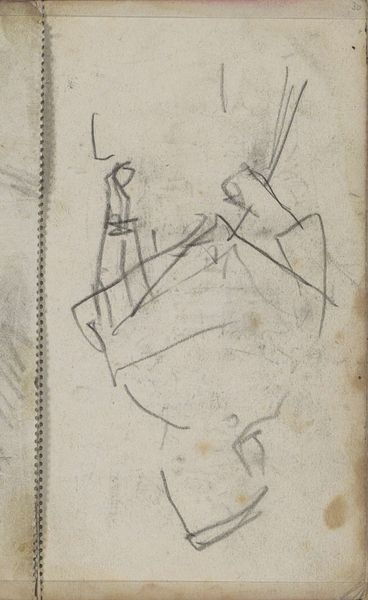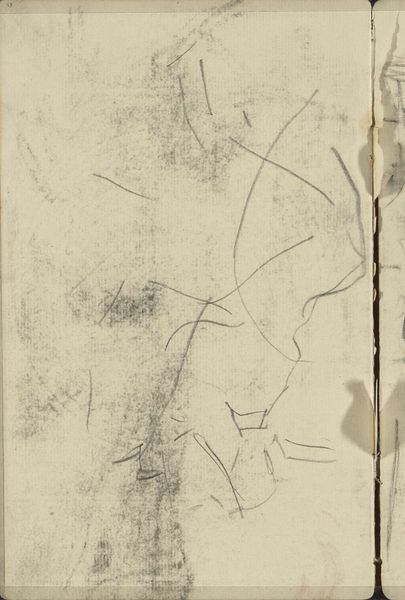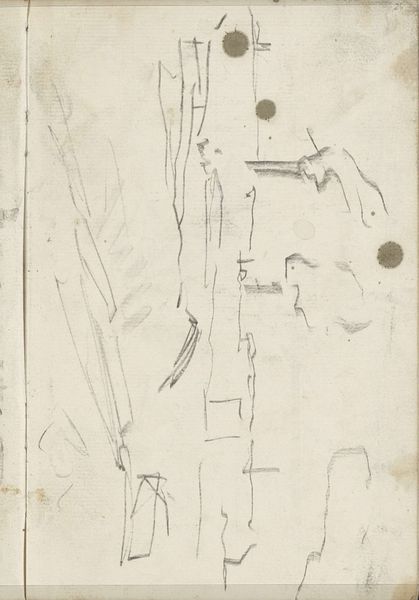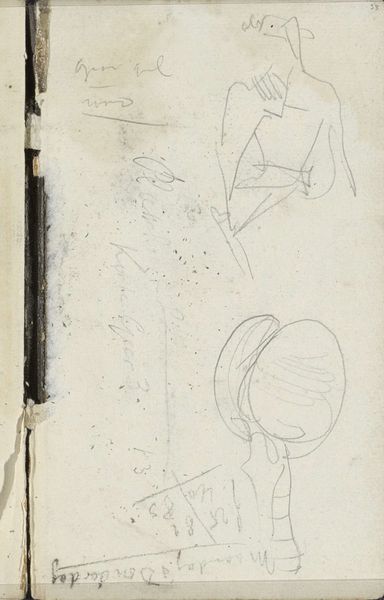
drawing, paper, pencil
#
portrait
#
drawing
#
imaginative character sketch
#
toned paper
#
quirky sketch
#
dutch-golden-age
#
impressionism
#
sketch book
#
paper
#
personal sketchbook
#
idea generation sketch
#
sketchwork
#
sketch
#
pencil
#
geometric-abstraction
#
sketchbook drawing
#
cityscape
#
storyboard and sketchbook work
#
sketchbook art
#
profile
Copyright: Rijks Museum: Open Domain
Curator: Right now we’re looking at "Architectuurstudies en een vrouw", a pencil drawing on paper created by George Hendrik Breitner between 1880 and 1882. It’s part of the Rijksmuseum's collection. Editor: My initial response is one of intrigue. There's a chaotic beauty to the rapid lines, like catching fleeting thoughts. What I find most captivating is how Breitner merges architectural forms with what appears to be a human figure. It gives the sketch an almost dreamlike, fragmented quality. Curator: Breitner’s urban scenes often blurred the lines between documentation and emotional expression. Looking at his body of work from an intersectional feminist perspective, this blurring troubles established hierarchies and raises pertinent questions about visibility in a rapidly changing urban landscape. How are we reading the image of this woman? How might gender expectations constrain this artistic freedom? Editor: That's a fascinating perspective. To contextualize further, Breitner was working at a time of intense urbanization in Amsterdam. The very fabric of the city was being reshaped by industrialization and shifting social dynamics, captured with particular aesthetic sensibility. Drawings like this, seemingly spontaneous, were vital to understanding how social contexts were being visually and emotionally translated by him at that moment. The page itself almost mirrors a construction site: layered, incomplete, but full of potential. The sketch seems as much about progress as it is about disorientation. Curator: Precisely. And how do these urban dynamics play out in the representation of women? Who had the access and resources for their visibility to translate to a meaningful societal transformation? Does the sketched woman seem to dissolve into or resist her environment? There’s a tension between autonomy and confinement here that begs exploration. Editor: It raises an interesting point regarding the political undercurrent within seemingly innocuous sketchbook pages like these. Ultimately, these fragments offer glimpses into how artists engaged, questioned, and visualized their world. It underscores art's vital role as a commentator on the politics of its era, urging viewers to examine the narratives woven into these images. Curator: So even sketches can act as cultural texts. I hadn't considered the layered meanings contained in his rapid lines, which makes it even more urgent to recognize these women who helped reshape our understanding of space and identity. Editor: Indeed. Breitner’s personal investigations challenge and re-imagine narratives—a reminder that history, art, and society intersect.
Comments
No comments
Be the first to comment and join the conversation on the ultimate creative platform.
